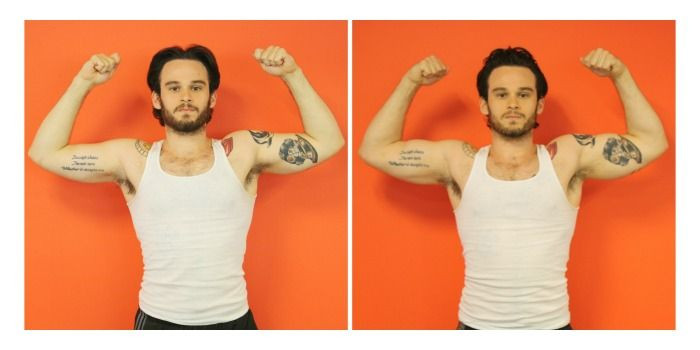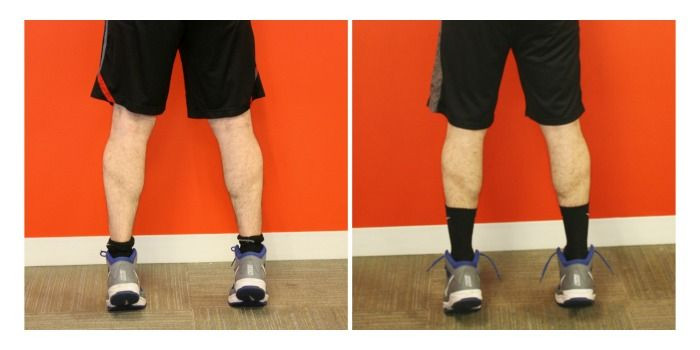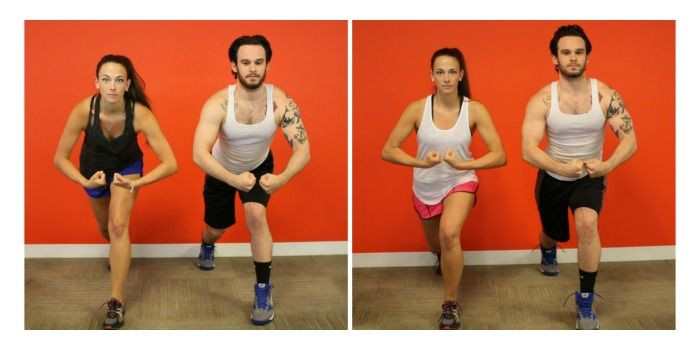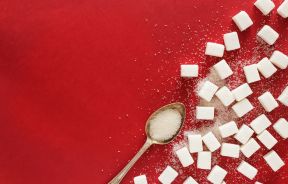Debunking The Greatest Gender Fitness Myths; Cardio Kills Men's Gains, Weightlifting Makes Women Bulk
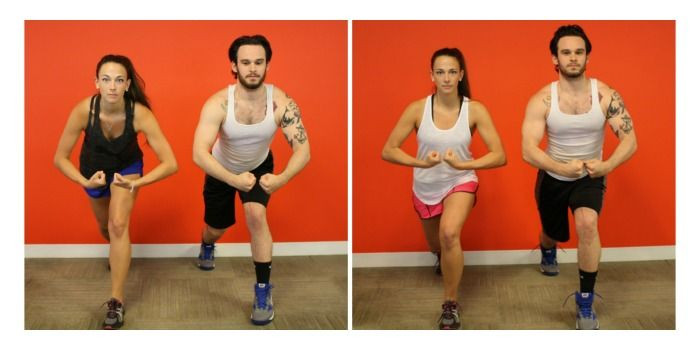
The Runner Steps Inside the Weight Room
I watched with widened eyes as my fingertips brushed over the inside of my palm. Calluses were beginning to form and there was something about the hardened skin that made me proud. I had only been working out for a month before the weights tore my skin open, ripped apart broken blisters, and grew back thicker and stronger than before. Following closely behind my rough hands, bigger muscles grew, wrapping themselves tightly around my forearms, biceps, triceps, chest, and shoulder blades. I began weightlifting to show how muscles build on a woman’s body. What I hadn’t planned for was learning how to harness the high from the strength I felt with each lift, curl, and lunge.
My coworker Justin and I had set out on a two-month experiment to disprove one of the greatest myths in the fitness world — where men and women belong in the gym. Justin lifted weights and I ran, making our workout routines the typical male and female counterparts of athleticism. While men tend to shy away from the treadmill in fear they’ll develop the lean build of a cross country runner, women, on the other hand, are reluctant to lift a weight to avoid building bulky muscles.
But in truth, these are one of the greatest misconceptions in fitness. Women have less testosterone than men, which is why their musculature doesn’t respond as quickly to weight training as men do. Testosterone is a male hormone found naturally in both men and women; however, men produce approximately 7 milligrams a day — 15 times more than women produce.
When testosterone is secreted, it goes into the blood stream where 96 to 98 percent connects to transport protein. The remaining “free testosterone” increases the amount of muscle protein synthesized in the body, which leads to both the increase of fat-free muscle mass and muscle size. Without supplementation, research indicated I couldn’t attain the same muscle mass as Justin by the end of the experiment despite my helpless efforts.
Playing with Protein Powder
In order to enhance and optimize our workout experiment, we decided to incorporate protein powder into our post-workout routines. After hearing about our experiment, Vega volunteered to send us their Sport Performance Protein. One scoop of their powder provides four sources of protein, which added up to 25 grams of a complete amino acid profile — the building blocks of protein.
For the first month, Justin and I worked out without protein powder, which meant he had to abstain from taking the protein powder he was taking before the experiment began. For the second month, we each took one scoop of Vega protein powder within a half hour of our workouts. But first, I turned to Vega National Educator and dietician Kim McDevitt for advice before beginning the experiment.
“I don’t believe you will bulk up by taking protein powder,” McDevitt said. “Bulking is an excess of calories, period. If you increase your workout and build lean muscle, you could see the scale increase because muscle weighs more than fat. When people aren’t seeing the number they want on the scale, they become concerned because they put in all of this hard work. I always tell people to go by how your clothes fit and to take pictures in order to see your changes and achievements.”
Justin and I stepped on the scale the first Monday of the experiment and recorded our weights. At work, we took pictures, posing to show the definition we were starting with. I’ve been a runner my whole life, alternating routes between the beach, road, and track, and all I had to show for it were muscled calves (and I flexed them proudly). The only time I consistently incorporated weight training into my workouts was when I ran track in college and the coach made us do it. That’s all it was to us runners — a punishment. I wanted the road beneath my feet, not a dumbbell in my hands. I don’t think I ever truly understood strength until the second month of lifting, when I felt myself barbell bench press weight beyond my initial ability. It was then the experiment took an empowering shift from focusing on my physical appearance to becoming physically strong.
When you workout, you burn glucose, or fuel. After you burn through your stored glycogen, your body begins to break down muscle by making tiny little tears. When you get home and start refueling, you need to replenish the glucose that you lost so that you can start your muscles’ repairing process. However, they won’t rebuild until you repair that muscle with glycogen, which comes from a mix of carbohydrates and protein. McDevitt recommends a 4-to-1 protein-carbohydrate ratio right after a workout between 50 to 100 calories.
Numbers quickly became a daily rotation of calculations in my head. My alarm would go off at 6:00 a.m. But instead of heading outside, I retreated into the gym, where I would usually run two to four miles on the treadmill or bike, pushing hard enough to break a sweat before I began lifting, squatting, and curling various weights for the remaining hour of my workout. Week after week, running became easier as the weight I lifted grew heavier, until eventually I ran a personal record in an up-hill 5k I had been running for 12 years. In the end, I knew it wasn’t the merits of my legs that had given me a new achievement, but instead the newfound strength I found within myself through weightlifting.
The Numbers
My start weight:
130 pounds
Workout Routine:
Two to 12 miles running or biking. Each week involved daily alternations between biceps-chest and triceps-shoulders starting at 10 pounds and ending at 15 pounds for three sets of 15. Twice a week, I incorporated Pilates and Russian twists with a 10-pound medicine ball. One to two days off each week.
Diet and Drink Intake:
Five days on a vegetarian diet with two days of animal protein each week. Daily caloric intake ranged between 1,600 to 3,200 calories. One scoop of protein powder followed every weightlifting workout within half an hour of exercise. Daily water intake: 2 to 4 liters. Alcohol intake: 2 to 10 drinks per week.
End weight:
134 pounds


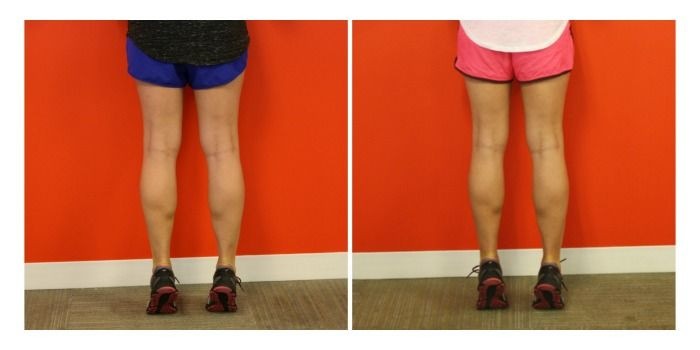

The Gym Rat Hits the Track
Sam is absolutely right. Prior to our little two-month experiment, any thought of venturing over to the part of my gym where you would find people on treadmills or stationary bikes was met with trepidation. Admittedly, it was over a misguided fear of losing the muscle I had worked so hard to build. Can you blame me? The long distance runners and competitive cyclists that pop up on Sportscenter while I check yesterday’s scores aren’t exactly my ideal body type. And on top of that, I had to refrain from using protein powder, pre-workouts, creatine, BCAAs, and glutamine for 30 days. Needless to say, I had my work cut out for me.
With summer quickly approaching at the start of our experiment, my goal was to stay around the same weight while replacing fat with muscle. When Sam told me we would be avoiding any supplementation for the first month, I immediately made my way to the grocery store to stock up on macronutrients: protein in the form of chicken, turkey, and lean steak; carbohydrates in the form of rice and sweet potatoes; and healthy fats in the form of tree nuts, legumes, and avocados. While I wasn’t happy about dropping supplementation, I knew everything I needed from protein powders and other supplements could be found at my local grocery store.
“Supplements are exactly what they are… supplements,” Donovan Green, celebrity fitness trainer and author of No Excuses Fitness, told Medical Daily. “They should never replace real food. They are only additions to your diet. Nothing beats good food. Put more focus on your diet and on good food than you do on supplements. All of my clients understand that food is the best way to get long-lasting results, and the good news is there are no bad side effects from whole foods. And my final point is your body will not change in the gym; it will change in the kitchen.”
After food shopping, it was time to pick out a workout plan that would be sufficient enough for what both Sam and I were looking to achieve. We settled on the 60 Days To Fit workout plan from fitness expert James Grage. Although this program is designed to “maximize muscle gain and minimize fat storage,” it’s still based solely around strength training exercises. This meant I had to find my own avenues for cardio. Since running was completely out of the question due to my unrivaled laziness, I decided to try my hand at cycling and rowing (both stationary, of course).
Weightlifting has always been almost second nature to me. Participating in sports (football, basketball, and lacrosse) year-round in both high school and college meant I was no stranger to the inside of a weight room. However, I considered cardio, especially running, to be a punishment just like Sam considered strength training to be a punishment. Not to mention, the amount of calories I would burn doing cardio coupled with a small appetite and no protein powder. Building muscle (or fat depending on what you eat) comes down to consuming more calories than you burn, and it seemed like I was about to burn more calories than I could consume.
No Supplements, No Problem
Nobody was more surprised than me when my muscles didn’t deteriorate within a week of adding cardio to my routine and cutting out all supplements. By the end of my 30 days with cardio and without supplements, I had gained 1 pound and noticed significant differences with my lean-to-fat ratio. Let me clarify that you can lose muscle by adhering to a strict cardio regimen. I knew at the beginning of the experiment that if gaining fat or building muscle comes down to what I put into my body and how I used it for fuel, then I would have to make up for that protein shake I wasn’t getting after my workout by adding an extra chicken breast to my dinner that night or inhaling a cup of Greek yogurt as soon as I left the gym.
“Protein in any form is a great addition in your diet whether you want to lose weight or pack on muscle,” Green added. “Both men and women should consume a good amount of protein each day, especially if you are very active in the gym. It is a myth that men need more protein than women. The only difference is women tend to weigh less than men and have less muscles, so the amount of protein will naturally be less. Men also create more testosterone and androgen. If a guy has 80 grams, then a woman should have about the same depending on her weight, height, and specific goals.”
Research conducted by scientists from Sweden suggests that finally adding cardio to my strength training routine is what led to my newfound muscularity and definition. Following five weeks of a program that coupled cardio and strength training, 10 men between the ages of 25 and 30 watched their muscle volume grow by 14 percent compared to eight percent in men who only participated in strength training. Their muscle fiber size also increased by 17 percent after combining cardio and strength training compared to nine percent among those who strictly participated in strength training.
When we get our blood pumping via cardio we also increase the number of small blood vessels known as capillaries that network thorough our muscles. As the number of capillaries increases so does the body’s ability to transport oxygen, nutrients, and hormones that aid in muscle recovery, which we should all know is key to muscle growth. Results of the Swedish study also showed that the effect cardio has on insulin sensitivity leads to the body processing and using carbs more efficiently. As cardio improves insulin sensitivity, it leads to an increase in the number of carbs and amino acids we need for our muscles to grow.
The Numbers
My Start Weight:
185 pounds
Workout Routine:
Three days of cardio (Monday, Wednesday, and Friday), five days of strength training (Monday, Tuesday, Thursday, Friday, and Sunday), and one full rest day (Saturday). “Heavy” strength training days were always followed by either a rest day or a “Light” strength training day to prevent overtraining my muscles and facilitate delayed onset muscle soreness (DOMS). Cycling and rowing started at a dismal 1 to 2 miles per day, but ended at a satisfying 5 to 7 miles per day.
Diet and Drink Intake:
To compensate for the first month of no supplements, I would hard boil around a dozen eggs to serve as my post-workout protein intake. When the taste of hard-boiled eggs quickly soured on me I turned to Greek yogurt or cottage cheese. Meals generally consisted of interchangeable proteins (chicken, tilapia, or lean steak), interchangeable carbs (brown rice or sweet potatoes), and something green to cover half of my plate (broccoli, asparagus, or spinach). Daily caloric intake: 2,500 to 3,500 calories. Water intake: Gallon of water a day. Alcohol intake: I don’t drink.
End Weight:
187 pounds
